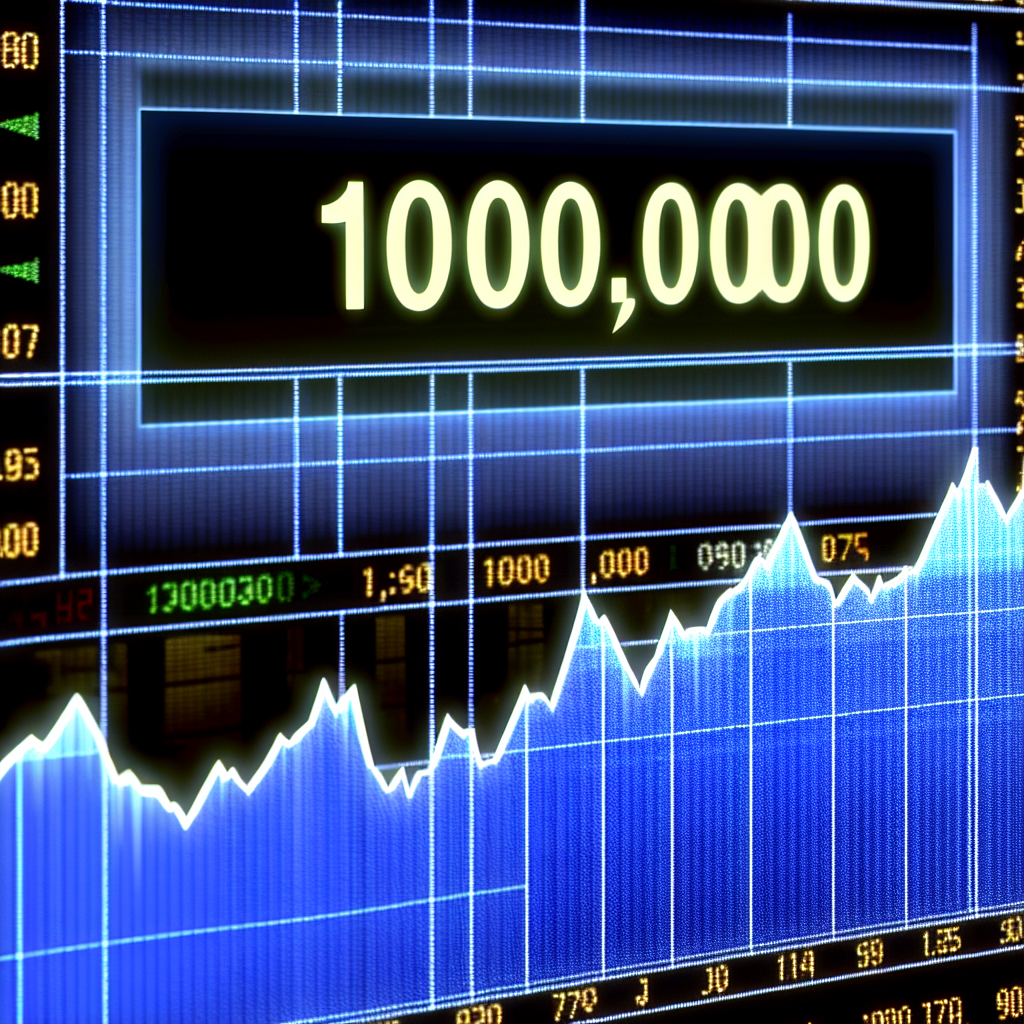India’s Sensex Crosses Historic 100,000 Threshold
In a landmark moment for the Indian financial markets, the Bombay Stock Exchange’s (BSE) Sensex index crossed the historic 100,000 mark for the first time in its history. This milestone not only reflects the robust growth of India’s economy but also signals increased investor confidence and the country’s rising prominence on the global economic stage. The Sensex, a benchmark index comprising 30 of the largest and most actively traded stocks on the BSE, serves as a barometer of India’s economic health and market sentiment.
The Journey to 100,000: A Historical Perspective
The Sensex was first introduced in 1986 with a base value of 100 points. Over the decades, it has witnessed several ups and downs, mirroring India’s economic reforms, global financial crises, and domestic policy changes. The crossing of the 100,000 threshold is a testament to the resilience and dynamism of the Indian stock market.
Key milestones in the Sensex’s journey include:
- 2000: Sensex crossed the 5,000 mark, reflecting the dot-com boom and liberalization effects.
- 2008: Despite the global financial crisis, the Sensex rebounded quickly, showcasing market resilience.
- 2017: The index crossed 30,000, driven by strong corporate earnings and economic reforms like GST implementation.
- 2021: The Sensex breached 60,000 amid rapid digital adoption and vaccine rollouts.
Reaching 100,000 is not just a numerical achievement but a symbol of India’s growing economic stature.
Factors Driving the Sensex Surge
Several factors have contributed to this historic rise in the Sensex:
- Economic Growth: India’s GDP growth rate has consistently hovered around 6-7% in recent years, making it one of the fastest-growing major economies globally.
- Reforms and Policy Initiatives: Government initiatives such as Make in India, Digital India, and labor reforms have enhanced business confidence and attracted foreign investments.
- Foreign Institutional Investments (FII): Increased inflows from global investors seeking growth opportunities in emerging markets have buoyed the market.
- Technological Advancements: The rise of fintech, digital payments, and e-commerce has created new avenues for growth and investment.
- Corporate Earnings: Strong quarterly results from major companies in sectors like IT, pharmaceuticals, and banking have supported market optimism.
Case Study: Reliance Industries and Its Role in Market Momentum
Reliance Industries Limited (RIL), one of the largest conglomerates in India, has played a pivotal role in the Sensex’s ascent. The company’s strategic pivot towards digital services and retail has significantly boosted its market capitalization.
For instance, the launch of Jio Platforms revolutionized India’s telecom sector, attracting investments from global giants like Facebook and Google. This not only enhanced RIL’s valuation but also positively influenced the overall market sentiment.
Implications for Investors and the Economy
The Sensex crossing 100,000 has several implications:
- Investor Confidence: The milestone boosts confidence among domestic and international investors, encouraging further capital inflows.
- Wealth Creation: Retail investors and mutual funds have benefited from the market rally, contributing to increased household wealth.
- Economic Indicator: A rising Sensex often correlates with economic expansion, increased corporate profitability, and improved business conditions.
- Market Volatility: While the milestone is positive, investors should remain cautious of potential volatility due to global uncertainties and domestic challenges.
Global Context: How India Compares
India’s Sensex joining the 100,000 club places it among the world’s leading stock indices in terms of growth trajectory. For comparison:
- The Dow Jones Industrial Average (DJIA) in the United States crossed 30,000 in 2020, reflecting mature market dynamics.
- The Shanghai Composite Index in China has hovered around 3,000-4,000 points, indicating different market structures and economic phases.
- India’s rapid ascent highlights its emerging market potential and growing investor interest.
Conclusion: A New Era for Indian Markets
The Sensex crossing the 100,000 threshold is more than just a numerical landmark; it symbolizes India’s economic transformation and the growing confidence of investors in the country’s future. Driven by strong economic fundamentals, policy reforms, and technological innovation, the Indian stock market is poised for continued growth.
However, investors must remain vigilant about global economic uncertainties, inflationary pressures, and geopolitical risks that could impact market stability. As India steps into this new era, the Sensex milestone serves as a beacon of opportunity, encouraging both domestic and international investors to participate in the country’s growth story.
Ultimately, the historic rise of the Sensex reflects the aspirations of a billion-plus population and the promise of a vibrant, resilient economy ready to take on the challenges of the 21st century.





